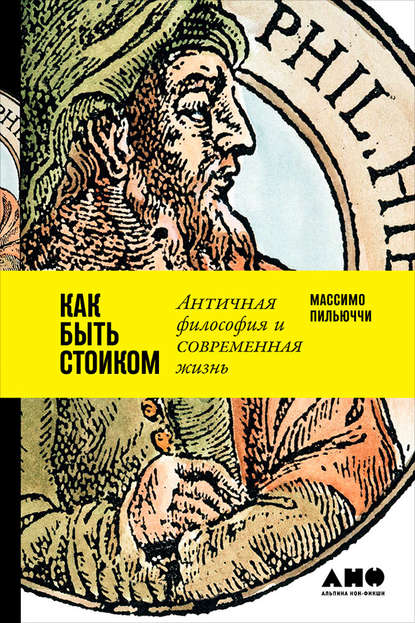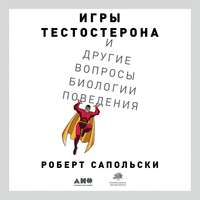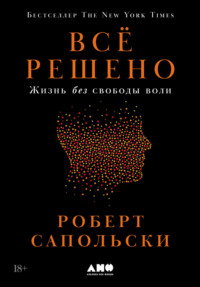
Полная версия
Биология добра и зла. Как наука объясняет наши поступки
138
J. Richeson et al., “An fMRI Investigation of the Impact of Interracial Contact on Executive Function,” Nat Nsci 6 (2003): 1323; K. Knutson et al., “Why Do Interracial Interactions Impair Executive Function? A Resource Depletion Account,” TICS 10 (2007): 915; K. Knutson et al., “Neural Correlates of Automatic Beliefs About Gender and Race,” Human Brain Mapping 28 (2007): 915.
139
N. Kanwisher et al., “The Fusiform Face Area: A Module in Human Extrastriate Cortex Specialized for Face Perception,” J Nsci 17 (1997): 4302; J. Sergent et al., “Functional Neuroanatomy of Face and Object Processing: A Positron Emission Tomography Study,” Brain 115 (1992): 15; A. Golby et al., “Differential Responses in the Fusiform Region to Same-Race and Other-Race Faces,” Nat Nsci 4 (2001): 845; A. J. Hart et al., “Differential Response in the Human Amygdala to Racial Outgroup Versus Ingroup Face Stimuli,” Neuroreport 11 (2000): 2351.
140
K. Shutts and K. Kinzler, “An Ambiguous-Race Illusion in Children’s Face Memory,” Psych Sci 18 (2007): 763; D. Maner et al., “Functional Projection: How Fundamental Social Motives Can Bias Interpersonal Perception,” JPSP 88 (2005): 63; K. Hugenberg and G. Bodenhausen, “Facing Prejudice: Implicit Prejudice and the Perception of Facial Threat,” Psych Sci (2003): 640; J. Van Bavel et al., “The Neural Substrates of In-group Bias: A Functional Magnetic Resonance Imaging Investigation,” Psych Sci 19 (2008): 1131; J. Van Bavel and W. Cunningham, “Self-Categorization with a Novel Mixed-Race Group Moderates Automatic Social and Racial Biases,” PSPB 35 (2009): 321.
141
A. Avenanti et al., “Racial Bias Reduces Empathic Sensorimotor Resonance with Other-Race Pain,” Curr Biol 20 (2010): 1018; V. Mathur et al., “Neural Basis of Extraordinary Empathy and Altruistic Motivation,” Neuroimage 51 (2010): 1468–75.
142
J. Correll et al., “Event-Related Potentials and the Decision to Shoot: The Role of Threat Perception and Cognitive Control,” JESP 42 (2006): 120.
143
J. Eberhardt et al., “See Black: Race, Crime, and Visual Processing,” JPSP 87 (2004): 876; I. Blair et al., “The Influence of Afrocentric Facial Features in Criminal Sentencing,” Psych Sci 15 (2004): 674; M. Brown et al., “The Effects of Eyeglasses and Race on Juror Decisions Involving a Violent Crime,” AMFP 26 (2008): 25.
144
J. LeDoux, “Emotion: Clues from the Brain,” Ann Rev of Psych 46 (1995): 209.
145
T. Ito and G. Urland, “Race and Gender on the Brain: Electrocortical Measures of Attention to the Race and Gender of Multiply Categorizable Individuals,” JPSP 85 (2003): 616; N. Rule et al., “Perceptions of Dominance Following Glimpses of Faces and Bodies,” Perception 41 (2012): 687; C. Zink et al., “Know Your Place: Neural Processing of Social Hierarchy in Humans,” Neuron 58 (2008): 273.
146
T. Tsukiura and R. Cabeza, “Shared Brain Activity for Aesthetic and Moral Judgments: Implications for the Beauty-Is-Good Stereotype,” SCAN 6 (2011): 138.
147
H. Aviezer et al., “Body Cues, Not Facial Expressions, Discriminate Between Intense Positive and Negative Emotions,” Sci 338 (2012); 1225; C. Bobst and J. Lobmaier, “Men’s Preference for the Ovulating Female Is Triggered by Subtle Face Shape Differences,” Horm Behav 62 (2012): 413; N. Rule and N. Ambady, “Democrats and Republicans Can Be Differentiated from Their Faces,” PLoS ONE 5 (2010): e8733; N. Rule et al., “Flustered and Faithful: Embarrassment as a Signal of Prosociality,” JPSP 102 (2012): 81; N. Rule et al., “On the Perception of Religious Group Membership from Faces,” PLoS ONE 5 (2010): e14241.
148
P. Whalen et al., “Human Amygdala Responsivity to Masked Fearful Eye Whites,” Sci 306 (2004): 2061.
149
К сноске: R. Hill and R. Barton, “Red Enhances Human Performance in Contests,” Nat 435 (2005): 293; M. Attrill et al., “Red Shirt Colour Is Associated with Long-Term Team Success in English Football,” JSS 26 (2008): 577; M. Platti et al., “The Red Mist? Red Shirts, Success and Team Sports,” JSS 15 (2012): 1209; A. Ilie et al., “Better to Be Red Than Blue in Virtual Competition,” CyberPsychology & Behav 11 (2008): 375; M. Garcia-Rubio et al., “Does a Red Shirt Improve Sporting Performance? Evidence from Spanish Football,” AEL 18 (2011): 1001; C. Rowe et al., “Sporting Contests: Seeing Red? Putting Sportswear in Context,” Nat 437 (2005): E10.
150
D. Francey and R. Bergmuller, “Images of Eyes Enhance Investments in a Real-Life Public Good,” PLoS ONE 7 (2012): e37397; M. Bateson et al., “Cues of Being Watched Enhance Cooperation in a Real-World Setting,” Biol Lett 2 (2006): 412; K. Haley and D. Fessler, “Nobody’s Watching? Subtle Cues Affect Generosity in an Anonymous Economic Game,” EHB 3 (2005): 245; T. Burnham and B. Hare, “Engineering Human Cooperation,” Hum Nat 18 (2007): 88; M. Rigdon et al., “Minimal Social Cues in the Dictator Game,” JEP 30 (2009): 358.
151
C. Forbes et al., “Negative Stereotype Activation Alters Interaction Between Neural Correlates of Arousal, Inhibition and Cognitive Control,” SCAN 7 (2011): 771.
152
C. Steele, Whistling Vivaldi and Other Clues to How Stereotypes Affect Us (New York: Norton, 2010).
153
L. Mujica-Parodi et al., “Chemosensory Cues to Conspecific Emotional Stress Activate Amygdala in Humans,” PLoS ONE 4 (2009): e6415; W. Zhou and D. Chen, “Fear-Related Chemosignals Modulate Recognition of Fear in Ambiguous Facial Expressions,” Psych Sci 20 (2009): 177; A. Prehn et al., “Chemosensory Anxiety Signals Augment the Startle Reflex in Humans,” Nsci Letters 394 (2006): 127.
154
H. Critchley and N. Harrison, “Visceral Influences on Brain and Behavior,” Neuron 77 (2013): 624; D. Carney et al., “Power Posing Brief Nonverbal Displays Affect Neuroendocrine Levels and Risk Tolerance,” Psych Sci 21 (2010): 1363. Некоторые связанные с темой результаты: A. Hennenlotter et al., “The linkd Between Facial Feedback and Neural Activity Within Central Circuitries of Emotion: New Insights from Botulinum Toxin-Induced Denervation of Frown Muscles,” Cerebral Cortex 19 (2009): 357; J. Davis, “The Effects of BOTOX Injections on Emotional Experience,” Emotion 10 (2010): 433.
155
L. Berkowitz, “Pain and Aggression: Some Findings and Implications,” Motivation and Emotion 17 (1993): 277.
156
M. Gailliot et al., “Self-Control Relies on Glucose as a Limited Energy Source: Willpower Is More Than a Metaphor,” JPSP 92 (2007): 325–36; N. Mead et al., “Too Tired to Tell the Truth: Self-Control Resource Depletion and Dishonesty,” JESP 45 (2009): 594; C. DeWall et al., “Depletion Makes the Heart Grow Less Helpful: Helping as a Function of Self-Regulatory Energy and Genetic Relatedness,” PSPB 34 (2008): 1653; B. Briers et al., “Hungry for Money: The Desire for Caloric Resources Increases the Desire for Financial Resources and Vice Versa,” Psych Sci 17 (2006): 939; C. DeWall et al., “Sweetened Blood Cools Hot Tempers: Physiological Self-Control and Aggression,” Aggressive Behav 37 (2011): 73; D. Benton, “Hypoglycemia and Aggression: A Review,” Int J Nsci 41 (1988): 163; B. Bushman et al., “Low Glucose Relates to Greater Aggression in Married Couples,” PNAS USA 111 (2014): 6254. Альтернативное толкование всех этих данных с точки зрения мотиваций и самоконтроля: M. Inzlicht et al., “Why Self-Control Seems (But May Not Be) Limited,” TICS 18 (2014): 127.
157
V. Liberman et al., “The Name of the Game: Predictive Power of Reputations Versus Situational Labels in Determining Prisoner’s Dilemma Game Moves,” PSPB 30 (2004): 1175; A. Kay and L. Ross, “The Perceptual Push: The Interplay of Implicit Cues and Explicit Situational Construals on Behavioral Intensions in the Prisoner’s Dilemma,” JESP 39 (2003): 634.
158
К сноске: E. Hall et al., “A Rose by Any Other Name? The Consequences of Subtyping ‘African-Americans’ from ‘Blacks,’” JESP 56 (2015): 183.
159
К сноске: K. Jung et al., “Female Hurricanes Are Deadlier Than Male Hurricanes. PNAS 111 (2014): 8782.
160
A. Tversky and D. Kahneman, “Rationale Choice and the Framing of Decisions,” J Business 59 (1986): S251; также см.: J. Bargh et al., “Priming In-group Favoritism: The Impact of Normative Scripts in the Minimal Group Paradigm,” JESP 37 (2001): 316; C. Zogmaister et al., “The Impact of Loyalty and Equality on Implicit Ingroup Favoritism,” Group Processes & Intergroup Relations 11 (2008): 493.
161
J. Christensen and A. Gomila, “Moral Dilemmas in Cognitive Neuroscience of Moral Decision-Making: A Principled Review,” Nsci Biobehav Rev 36 (2012): 1249; L. Petrinovich and P. O’Neill, “Influence of Wording and Framing Effects on Moral Intuitions,” Ethology and Sociobiology 17 (1996): 145; R. O’Hara et al., “Wording Effects in Moral Judgments,” Judgment and Decision Making 5 (2010): 547; R. Zahn et al., “The Neural Basis of Human Social Values: Evidence from Functional MRI,” Cerebral Cortex 19 (2009): 276.
162
D. Butz et al., “Liberty and Justice for All? Implications of Exposure to the U.S. Flag for Intergroup Relations,” PSPB 33 (2007): 396; M. Levine et al., “Identity and Emergency Intervention: How Social Group Membership and Inclusiveness of Group Boundaries Shape Helping Behavior,” PSPB 31 (2005): 443; R. Enos, “Causal Effect of Intergroup Contact on Exclusionary Attitudes,” PNAS 111 (2014): 3699.
163
M. Shih et al., “Stereotype Susceptibility: Identity Salience and Shifts in Quantitative Performance,” Psych Sci 10 (1999): 80.
164
P. Fischer et al., “The Bystander-Effect: A Meta-analytic Review on Bystander Intervention in Dangerous and Non-dangerous Emergencies,” Psych Bull 137 (2011): 517.
165
B. Pawlowski et al., “Sex Differences in Everyday Risk-Taking Behavior in Humans,” Evolutionary Psych 6 (2008): 29; B. Knutson et al., “Nucleus Accumbens Activation Mediates the Influence of Reward Cues on Financial Risk Taking,” Neuroreport 26 (2008): 509; V. Griskevicius et al., “Blatant Benevolence and Conspicuous Consumption: When Romantic Motives Elicit Strategic Costly Signals,” JPSP 93 (2007): 85; L. Chang et al., “The Face That Launched a Thousand Ships: The Mating-Warring Association in Men,” PSPB 37 (2011): 976; S. Ainsworth and J. Maner, “Sex Begets Violence: Mating Motives, Social Dominance, and Physical Aggression in Men,” JPSP 103 (2012): 819; W. Iredale et al., “Showing Off in Humans: Male Generosity as a Mating Signal,” Evolutionary Psych 6 (2008): 386; M. Van Vugt and W. Iredale, “Men Behaving Nicely: Public Goods as Peacock Tails,” Brit J Psych 104 (2013): 3.
166
J. Q. Wilson and G. Kelling, “Broken Windows,” Atlantic Monthly, March 1982, p. 29.
167
K. Keizer et al., “The Spreading of Disorder,” Sci 322 (2008): 1681.
168
Несколько хороших примеров того, как лобная кора направляет и концентрирует обработку сенсорной информации: G. Gregoriou et al., “Lesions of Prefrontal Cortex Reduce Attentional Modulation of Neuronal Responses and Synchrony in V4,” Nat Nsci 17 (2014): 1003; S. Zhang et al., “Long-Range and Local Circuits for Top-Down Modulation of Visual Cortex Processing,” Sci 345 (2014): 660 и T. Zanto et al., “Causal Role of the Prefrontal Cortex in Top-Down Modulation of Visual Processing and Working Memory,” Nat Nsci 14 (2011): 656.
169
R. Adolphs et al., “A Mechanism for Impaired Fear Recognition After Amygdala Damage,” Nat 433 (2005): 68.
170
M. Dadds et al., “Reduced Eye Gaze Explains Fear Blindness in Childhood Psychopathic Traits,” J the Am Academy of Child and Adolescent Psychiatry 47 (2008): 4; M. Dadds et al., “Attention to the Eyes and Fear-Recognition Deficits in Child Psychopathy,” Brit J Psychiatry 189 (2006): 280.
171
Здесь введение в кросс-культурные исследования по этой теме: R. Nisbett et al., “Culture and Systems of Thought: Holistic Versus Analytic Cognition,” Psych Rev 108 (2001): 291; T. Hedden et al., “Cultural Influences on Neural Substrates of Attentional Control,” Psych Sci 19 (2008): 12; J. Chiao, “Cultural Neuroscience: A Once and Future Discipline,” Prog in Brain Res 178 (2009): 287 и H. Chua et al., “Cultural Variation in Eye Movements During Scene Perception,” PNAS 102 (2005): 12629.
172
Химическая кастрация обычно действенна в случаях обсессивных перверсий: F. Berlin, “‘Chemical Castration’ for Sex Offenders,” NEJM 336 (1997): 1030. Недостаточная эффективность в случае «враждебных» насильников: K. Peters, “Chemical Castration: An Alternative to Incarceration,” Duquesne University Law Rev 31 (1992): 307. Общие указания на то, что химическая кастрация не слишком эффективна: P. Fagan, “Pedophilia,” JAMA 288 (2002): 2458. Я благодарю Ариеля Ласки за помощь в исследовании по данной теме.
173
За примерами об отсутствии корреляции у приматов обращайтесь к работе: M. Arlet et al., “Social Factors Increase Fecal Testosterone Levels in Wild Male Gray-Cheeked Mangabeys (Lophocebus albigena),” Horm Behav 59 (2011): 605; J. Archer, “Testosterone and Human Aggression: An Evaluation of the Challenge Hypothesis,” Nsci Biobehav Rev 30 (2006): 319; приведенная цитата – со с. 320.
174
J. Oberlander and L. Henderson, “The Sturm und Drang of Anabolic Steroid Use: Angst, Anxiety, and Aggression,” TINS 35 (2012): 382; R. Agis-Balboa et al., “Enhanced Fear Responses in Mice Treated with Anabolic Androgenic Steroids,” Neuroreport 22 (2009); 617.
175
E. Hermans, et al., “Testosterone Administration Reduces Empathetic Behavior: A Facial Mimicry Study,” PNE 31 (2006): 859; J. Honk et al., “Testosterone Administration Impairs Cognitive Empathy in Women Depending on Second-to-Fourth Digit Ratio,” PNAS 108 (2011): 3448; P. Bos et al., “Testosterone Decreases Trust in Socially Naive Humans,” PNAS 107 (2010): 9991; P. Bos et al., “The Neural Mechanisms by Which Testosterone Acts on Interpersonal Trust,” Neuroimage 2 (2012): 730; P. Mehta and J. Beer, “Neural Mechanisms of the Testosterone-Aggression Relation: The Role of the Orbitofrontal Cortex,” J Cog Nsci 22 (2009): 2357.
176
L. Tsai and R. Sapolsky, “Rapid Stimulatory Effects of Testosterone upon Myotubule Metabolism and Hexose Transport, as Assessed by Silicon Microphysiometry,” Aggressive Behav 22 (1996): 357; C. Rutte et al., “What Sets the Odds of Winning and Losing?” TIEE 21 (2006) 16.
Уверенность в себе и выносливость: A. Boissy and M. Bouissou, “Effects of Androgen Treatment on Behavioral and Physiological Responses of Heifers to Fear-Eliciting Situations,” Horm Behav 28 (1994): 66; R. Andrew and L. Rogers, “Testosterone, Search Behaviour and Persistence,” Nat 237 (1972): 343; J. Archer, “Testosterone and Persistence in Mice,” Animal Behav 25 (1977): 479; M. Fuxjager et al., “Winning Territorial Disputes Selectively Enhances Androgen Sensitivity in Neural Pathways Related to Motivation and Social Aggression,” PNAS 107 (2010): 12393.
У спортсменов: M. Elias, “Serum Cortisol, Testosterone, and Testosterone-Binding Globulin Responses to Competitive Fighting in Human Males,” Aggressive Behav 7 (1981): 215; A. Booth et al., “Testosterone, and Winning and Losing in Human Competition,” Horm Behav 23 (1989): 556; J. Carré and S. Putnam, “Watching a Previous Victory Produces an Increase in Testosterone Among Elite Hockey Players,” PNE 35 (2010): 475; A. Mazur et al., “Testosterone and Chess Competition,” Soc Psych Quarterly 55 (1992): 70; J. Coates and J. Herbert, “Endogenous Steroids and Financial Risk Taking on a London Trading Floor,” PNAS 105 (2008): 616.
177
N. Wright et al., “Testosterone Disrupts Human Collaboration by Increasing Egocentric Choices,” Proc Royal Soc B (2012): 2275.
178
P. Mehta and J. Beer, “Neural Mechanisms of the Testosterone-Aggression Relation: The Role of Orbitofrontal Cortex,” J Cog Nsci 22 (2010): 2357; G. van Wingen et al., “Testosterone Reduces Amygdala – Orbitofrontal Cortex Coupling,” PNE 35 (2010): 105; P. Bos and E. Hermans et al., “The Neural Mechanisms by Which Testosterone Acts on Interpersonal Trust,” Neuroimage 2 (2012): 730.
179
Тестостерон снижает уровень страха и тревоги у грызунов: C. Eisenegger et al., “The Role of Testosterone in Social Interaction,” TICS 15 (2011): 263. Тестостерон ослабляет реакцию страха: V. Viau, “Functional Cross-Talk Between the Hypothalamic-Pituitary-Gonadal and -Adrenal Axes,” J Neuroendocrinology 14 (2002): 506. Тестостерон ослабляет реакцию вздрагивания у человека: J. van Honk et al., “Testosterone Reduces Unconscious Fear But Not Consciously Experienced Anxiety: Implications for the Disorders of Fear and Anxiety,” BP 58 (2005): 218; E. J. Hermans et al., “A Single Administration of Testosterone Reduces Fear-Potentiated Startle in Humans,” BP 59 (2006): 872.
180
Общие обзоры: R. Woods, “Reinforcing Aspects of Androgens,” Physiology & Behav 83 (2004): 279; A. DiMeo and R. Wood, “Circulating Androgens Enhance Sensitivity to Testosterone Self-Administration in Male Hamsters,” Pharmacology, Biochemistry & Behav 79 (2004): 383; M. Packard et al., “Rewarding Affective Properties of Intra – Nucleus Accumbens Injections of Testosterone,” Behav Nsci 111 (1997): 219.
181
A. N. Dimeo and R. I. Wood, “ICV Testosterone Induces Fos in Male Syrian Hamster Brain,” PNE 31 (2006): 237; M. Packard et al., “Rewarding Affective Properties of Intra – Nucleus Accumbens Injections of Testosterone,” Behav Nsci 111 (1997): 219; M. Packard et al., “Expression of Testosterone Conditioned Place Preference Is Blocked by Peripheral or Intra-accumbens Injection of Alpha-flupenthixol,” Horm Behav 34 (1998) 39; M. Fuxjager et al., “Winning Territorial Disputes Selectively Enhances Androgen Sensitivity in Neural Pathways Related to Motivation and Social Aggression,” PNAS 107 (2010): 12393; A. Lacreuse et al., “Testosterone May Increase Selective Attention to Threat in Young Male Macaques,” Horm Behav 58 (2010): 854.
182
A. Dixson and J. Herbert, “Testosterone, Aggressive Behavior and Dominance Rank in Captive Adult Male Talapoin Monkeys (Miopithecus talapoin),” Physiology & Behav 18 (1977): 539.
183
E. Hermans et al., “Exogenous Testosterone Enhances Responsiveness to Social Threat in the Neural Circuitry of Social Aggression in Humans,” BP 63 (2008): 263; J. van Honk et al., “A Single Administration of Testosterone Induces Cardiac Accelerative Responses to Angry Faces in Healthy Young Women,” Behav Nsci 115 (2001): 238; R. Ronay and A. Galinsky, “Lex Talionis: Testosterone and the Law of Retaliation,” JESP 47 (2011): 702; P. Mehta and J. Beer, “Neural Mechanisms of the Testosterone-Aggression Relation: The Role of Orbitofrontal Cortex,” J Cog Nsci 22 (2010): 2357; P. Bos et al., “Testosterone Decreases Trust in Socially Naïve Humans,” PNAS 107 (2010): 9991.
184
K. Kendrick and R. Drewett, “Testosterone Reduces Refractory Period of Stria Terminalis Neurons in the Rat Brain,” Sci 204 (1979): 877; K. Kendrick, “Inputs to Testosterone-Sensitive Stria Terminalis Neurones in the Rat Brain and the Effects of Castration,” J Physiology 323 (1982): 437; K. Kendrick, “The Effect of Castration on Stria Terminalis Neurone Absolute Refractory Periods Using Different Antidromic Stimulation Loci,” Brain Res 248 (1982): 174; K. Kendrick, “Electrophysiological Effects of Testosterone on the Medial Preoptic-Anterior Hypothalamus of the Rat,” J Endo 96 (1983): 35; E. Hermans et al., “Exogenous Testosterone Enhances Responsiveness to Social Threat in the Neural Circuitry of Social Aggression in Humans,” BP 63 (2008): 263.
185
J. Wingfield et al., “The ‘Challenge Hypothesis’: Theoretical Implications for Patterns of Testosterone Secretion, Mating Systems, and Breeding Strategies,” Am Naturalist 136 (1990): 829.
186
J. Archer, “Sex Differences in Aggression in Real-World Settings: A Meta-analytic Review,” Rev of General Psych 8 (2004): 291.
187
J. Wingfield et al., “Avoiding the ‘Costs’ of Testosterone: Ecological Bases of Hormone-Behavior Interactions,” Brain, Behav and Evolution 57 (2001): 239; M. Sobolewski et al., “Female Parity, Male Aggression, and the Challenge Hypothesis in Wild Chimpanzees,” Primates 54 (2013): 81; R. Sapolsky, “The Physiology of Dominance in Stable Versus Unstable Social Hierarchies,” in Primate Social Conflict, ed. W. Mason and S. Mendoza (New York: SUNY Press, 1993), p. 171. P. Bernhardt et al., “Testosterone Changes During Vicarious Experiences of Winning and Losing Among Fans at Sporting Events,” Physiology & Behav 65 (1998): 59.
188
M. Muller and R. Wrangham, “Dominance, Aggression and Testosterone in Wild Chimpanzees: A Test of the ‘Challenge’ Hypothesis,” Animal Behav 67 (2004): 113; J. Archer, “Testosterone and Human Aggression: An Evaluation of the Challenge Hypothesis,” Nsci Biobehav Rev 30 (2006): 319.
189
К сноске: L. Gettler et al., “Longitudinal Evidence That Fatherhood Decreases Testosterone in Human Males,” PNAS 108 (2011): 16194. S. Van Anders et al., “Baby Cries and Nurturance Affect Testosterone in Men,” Horm Behav 61 (2012): 31. J. Mascaro et al., “Testicular Volume is Inversely Correlated with Nurturing-Related Brain Activity in Human Fathers,” PNAS 110 (2013): 15746. У некоторых приматов время выполнения ряда отцовских обязанностей совпадает со временем соревнования самцов, должного улучшить их шансы на репродуктивный успех. В гормональном плане все усложняется, т. к. отцовство и соревновательность прямо противоположным образом влияют на уровень тестостерона. По данным одного исследования, зов чресел оказался сильнее отцовского порыва и уровень тестостерона повысился. P. Onyango et al., “Testosterone Positively Associated with Both Male Mating Effort and Paternal Behavior in Savanna Baboons (Papio cynocephalus),” Horm Behav 63 (2012): 430.
190
J. Higley et al., “CSF Testosterone and 5-HIAA Correlate with Different Types of Aggressive Behaviors,” BP 40 (1996): 1067.9781594205071_Behave_TX.indd 731 3/16/17 9:12 AM











